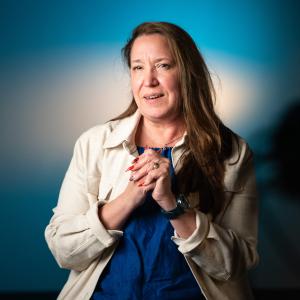Building trust to advance learner agency: From the perspective of the TLN
Imagine all the organizations that you engage with as you move through your life: you may utilize a bank to deposit and withdraw money, pay bills or transfer funds. You may get a job and engage in all kinds of activities like submitting hours, receiving pay, producing deliverables, etc. All these relationships are built on an invisible layer: trust.
 ASU’s Chief Information Security and Digital Trust Officer Donna Kidwell expands this idea into the Trusted Learner Network (TLN) space: if TLN is going to increase learner agency and offer a new set of services it needs to have the same level of trust as the processes learners participate in today. Kidwell notes that the trust system goes both ways: "We’re giving learners agency, so we also expect that they are the stewards, and the ones who understand best what they want to try to accomplish and to achieve.”
ASU’s Chief Information Security and Digital Trust Officer Donna Kidwell expands this idea into the Trusted Learner Network (TLN) space: if TLN is going to increase learner agency and offer a new set of services it needs to have the same level of trust as the processes learners participate in today. Kidwell notes that the trust system goes both ways: "We’re giving learners agency, so we also expect that they are the stewards, and the ones who understand best what they want to try to accomplish and to achieve.”
Read on to hear what Kidwell has to say about digital trust, the TLN’s technology, the importance of governance and transparency, and why now is the time for enabling technology like the TLN.
Giving more agency to learners
For centuries, institutions have been the place to go to acquire and create knowledge and the distribution of student credentials has been the sole responsibility of institutions. “The granting and verification of academic degrees and certificates are key acknowledgments for learners who’ve mastered the pursuit of knowledge,” said Kidwell.
“While the work of managing consent and distribution of those credentials has taken advantage of technology since the mid-90s, it’s been constrained to piping data around in traditional models.” The TLN reimagines this mold by offering a federated model of distributing student data at the learner’s behest with the help of blockchain technology (a distributed, decentralized ledger) and the opportunity to utilize self-sovereign identity (the ability for users to have control of their digital information).
“We’ve never had technology that realistically provides a secure, distributed model where you’d have a data set living in so many places with such strong encryption capabilities that you could create something with resilience,” said Kidwell. “That’s what has been really attractive about being able to lean into this new family of trust technologies.”
How governance creates security
But how can learners and institutions have confidence that the network is secure, safe and that the information being shared is accurate? “The single biggest thing we can do to ensure safety and security is to make very intentional decisions around the way in which the TLN is governed, both in the people who are governing it, and the kinds of policies and decisions that they’re making,” said Kidwell.
To this point, the TLN has a Governing Body and Architecture Advisory and the actions of the Governing body are intentionally open and transparent for anyone to participate in. It’s the knowledge and expertise of those who are part of the TLN Community that allow the innovation to happen. “Our security is never insured — it is something that requires constant diligence,” said Kidwell. “The only way you can really do that looking forward is to make it as open as possible.”
The impact of transparency and open source
That’s why, when it comes to the success of the TLN, being open source — freely sharing information and creating the opportunity to engage, interrogate and improve — was always key.
“The more open we make the TLN, the more we don’t have to be the only custodians of its destiny,” said Kidwell. “We can be custodians and stewards of the places where we know that it’s going to facilitate our mission, but we also open it up to other possibilities.”
For example, Kidwell envisions colleagues in Europe and Asia having their own set of difficulties, whether it’s security and privacy challenges, regulations and issues, and they are going to come up with their own frameworks by which they want to address that for their constituencies.
“If we want a world where education is really interoperable, credit mobility happens across all sorts of credit systems. If we want to do something really impactful, open source is the way of doing that.”
It’s the reality of solving these problems that excites Kidwell: the TLN is now in a place where technology can securely and safely empower those who understand what an interoperable digital credential ecosystem could look like…and go build it. “It’s glorious to actually see the work that Kate [Giovacchini] and the team are doing,” said Kidwell.
Why the time for digital credential ecosystems is now
In addition to technology being advanced enough to create a digital credential ecosystem, learners — especially Millennials and Gen Z — are more savvy, as well. Not only do learners have higher expectations of what their institutions can do, but they’ve grown up in more empowered environments — they are comfortable with themselves as creators and learners — putting credentials into the hands of learners to curate, explore and share is perfectly aligned to the vision of the TLN.
“That’s the spirit we’re trying to tap into,” said Kidwell. “We recognize that the future of education is going to look very different. We want the TLN to give learners the same kind of authenticity that they would get if they were creators, and then put their work on Twitch, streams or anything else.”